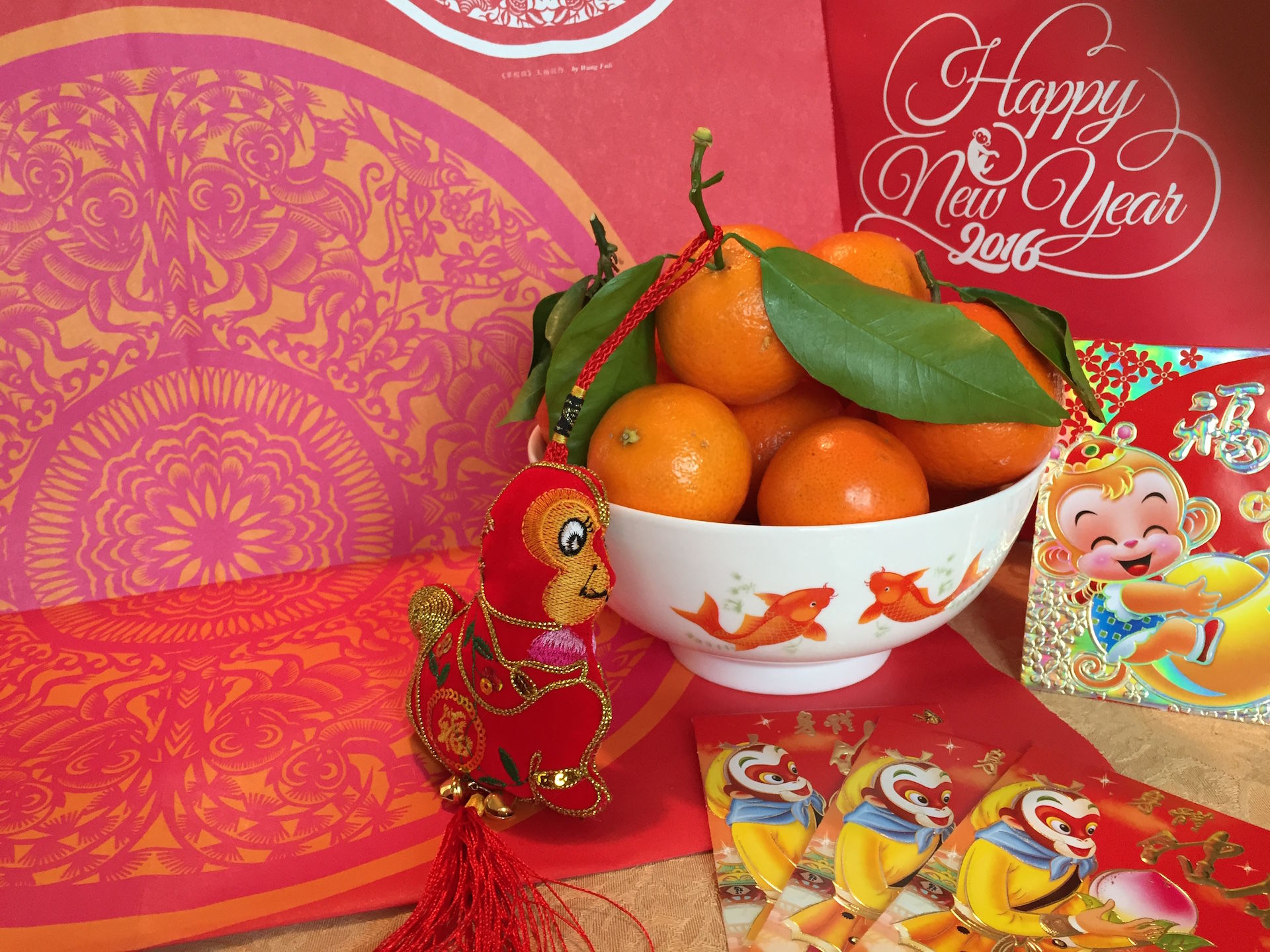On my recent trip to China in early January, I was surprised to find scads of scampering monkeys swinging on red and gold banners all over Beijing. “It’s weeks before February 8, the start of the new Lunar New Year; isn’t it a bit early to start decorating?” I asked my guide.
“Oh no,” she replied, “it’s such an important holiday, people begin preparations way ahead.”
Although I’m back in the East Bay now, part of me is still in China, wishing I could celebrate this New Year of the Monkey appropriately, with festive decorations and symbolic lucky foods. As I headed to a job in downtown Oakland last week, the clever Monkey spirit must have heard my wish, because I happened to pass the perfect store on the edge of Chinatown, called Chanco. Its personable owners, husband and wife Jimmy and Sandra Lam, were happy to help me find everything I need to warmly welcome this year’s Fire Monkey (who is supposed to usher in a year of passion, creativity, and joy).
Chanco’s long red sign on 7th Street proclaims it a Housewares and Restaurant Supply Shop – my equivalent of a free ticket to foodie Fairyland. I was smitten the moment I stepped inside the cavernous interior filled with neatly arranged shelves displaying over 10,000 items. Aisle after aisle of kitchen treasures: from elegant Japanese crockery; super-sized soup tureens; teeny teapots; to a profusion of gadgets (such as graters, peelers, curlers, zesters in a range of sizes). Chanco, a year-and-a-half-old, family-owned business, caters to a range of customers, from devoted home cooks to small restaurant owners to the elder residents of Chinatown.
When I asked Sandra what kind of dishes I would need for a Chinese New Year feast, she replied that it is important to use one’s best dishes or perhaps, like the custom of buying new clothes, a new set of dishes. She pointed out a few favorites for these festivities: red dishes with Chinese characters representing blessings, such as “longevity”; traditionally elegant blue and white patterns; or those featuring pink flowers, powerful dragons, or lucky koi fish.
An essential element in the preparation for Lunar New Year is a thorough house cleaning and Sandra directed me to a section of the store stocked with a rainbow-hued range of brushes, brooms and gloves. “Remember to sweep toward the door,” she says, “you are sweeping out all the bad luck accumulated in the last year.”
It’s important to maintain a positive attitude to welcome in a new year of health, family togetherness, longevity, wealth and other blessings. There are lucky foods to eat, and other auspicious traditions to observe.
“I love Lunar New Year because it is the time of year where everybody pauses from their busy lives to spend time with family and relatives, especially the elders,” Sandra says. “Growing up, my grandparents lived with us. My grandmother was kind of strict about keeping the New Year celebrations cheerful, as an omen for the coming year, so she didn’t let us watch any violent or sad TV shows, speak about bad things or eat anything with a negative connotation like bitter melon. ”
Sandra comes from a family of entrepreneurs. If you live closer to San Francisco, visit Kamei, a housewares store run by her aunt for over 20 years.
The quintessential dish on every Chinese New Year’s eve table is a steamed fish. The Chinese word for fish, yu, sounds like “surplus” and heralds prosperity. It is essential that the fish is served with head and tail attached to make sure that the coming year has both a good beginning and ending. In a previous post when Lisa Li showed me how to buy a live fish, she explained, “Another important aspect of Chinese New Year tradition is not to finish the fish course on New Year’s Eve, but leave some to be eaten the next day so that the abundance of the yu will continue into the New Year.”
The classic preparation for the fish is to steam it whole and Chanco carries a range of steamers that appeal to different groups. Sandra has noticed that Southeast Asian customers (Thai, Cambodian, Vietnamese, Burmese) love aluminum cookware, including steamers because they heat up faster.
Chinese cooks prefer stainless steel because they deem it a healthier material to cook in. Yet, bamboo steamers are also part of traditional Chinese cooking and believed to enhance the ingredients being steamed. Chanco has all of these in a range of sizes, as well as fish-shaped molds for lucky fish sponge cakes.
At Chanco, you can also find the red and gold banners that are hung all over the house to usher in good luck, little red envelopes with mischievous monkeys that are filled with money and handed out to the kids and lucky bamboo plants believed to attract positive energy.
At Chanco, you can also find the red and gold banners that are hung all over the house to usher in good luck, little red envelopes with mischievous monkeys that are filled with money and handed out to the kids and lucky bamboo plants believed to attract positive energy.


No comments:
Post a Comment